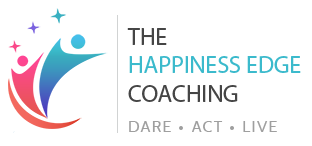Creating Your Optimal Flow at Work
Our sense of self is largely defined by what happens in two contexts:
- How we experience other people
- How we experience work
These are also the primary factors in our quality of life, according to numerous studies on happiness and meaning.
With optimal work experiences, we’re motivated to complete quality work that benefits others. This sense of accomplishment is self-perpetuating; it energizes us, our coworkers, our organization and our clients. This positivity emanates into our home life, enhancing personal relationships and experiences.
You can raise your quality of life through work with two strategies:
- Design/redesign roles with high challenge and skill levels. Workforces become more active and positive, with increased focus, creativity and satisfaction.
- Define and develop self-directing, intrinsic goals. We become more engaged at work when we recognize opportunities for action, hone our skills, set reachable goals, immerse our concentration and focus in the present. We experience a state of optimal “flow.”
Without these two key strategies we can easily slip into autopilot, and fail to see opportunities to excel.
Optimizing Your Work Experience
In order to optimize your work experience, challenges must stretch your skill level and capacity, but not push you to the point of overwhelm.
According to psychologist Mihaly Csikszentmihalyi, author of Flow: The Psychology of Optimal Experience, “flow is the moment in which a person’s body or mind is stretched to the limits in a voluntary effort to accomplish something difficult and worthwhile.” Everyone, regardless of their level, reports a need for challenge that optimizes the work experience by creating flow at work.
The main elements for flow include:
- Clear goals with benchmarks
- Immediate feedback on actions
- Balance between skills and challenges
- Mindful immersion in action
- Exclusion of other dimensions from consciousness (free from distraction)
- Task focused without fear of failure, as we’re focused on what has to be done
- Unbound from ego or self-concern
- Distorted sense of time
- Action that becomes inherently enjoyable
How to Optimize Your Flow at Work
All jobs have routine components that can become boring and unexciting. The key is to remain alert for opportunities to make them interesting.
To develop flow experiences:
- Set clear goals with benchmarks: Engaging goals are substantial, complex, realistic and attainable. When we reach benchmarks, our brain’s reward center is stimulated, releasing neurotransmitters that incent us to accomplish more small tasks, and ultimately reach our goals.Successful self-direction is based on goals and directions that support purpose. Identify how your goals align with your mission and purpose. A sense of ownership, regardless of who set the goal, will strengthen motivation and effort to achieve goals. Your actions are internally controlled, and can be easily modified if deemed necessary.
- Immerse yourself in activity: When goals are clearly defined and a plan of action has been determined, all attention can be focused on tasks.Success requires a balance of actionable opportunities and skillfulness. Although tempting (and often encouraged), multi-tasking has been proven unreliable and fallible. Limit possible distractions and develop your ability to focus and concentrate. By taking the time to focus on one thing at a time, we can achieve the flow experience.
- Be mindful: A momentary lapse of attention may not be catastrophic, but it can cause serious consequences of missed opportunities or warning signs—ask any athlete or surgeon.Focused and sustained concentration sets the stage for productive work activities. Bustling work environments, shared office space and noise pollution create negative work conditions for many people. If not managed, technology can add to the possibility of interruption and disruption.The majority of us do not work in arenas (sports or surgical), but we do face device screens with a steady flow of information, data and reports. Our greatest source of distraction may be our own minds, trapping us in perpetual self-consciousness. Maintain concentration with constant inputs of attention.
- Enjoy the now: Only then can you do your best work.
The moment our attention shifts from the now—the task we are performing at this moment—and hooks our egos—judging ourselves or concerned with how others perceive us—we have shifted from a mindful focus and lost the joy of flow. Tasks become more difficult and less natural.
Avoid worrying about others’ reactions or future outcomes, and focus on the present.
Control Your Flow
We can experience greater joy and flow at work by managing our thoughts, concentration and goals. Achieving control, however, requires commitment and focus. It is not a hedonistic practice, nor is it a laissez-faire attitude or act of denial in response to chaos or apathy.
Transforming random events into flow experiences requires determination and discipline; it requires acceptance of challenges and development of skills that strengthen our authentic self, and lifts us to higher places.
Let me know how I can help you create your optimal flow at work; send me an email or connect with me on LinkedIN.

